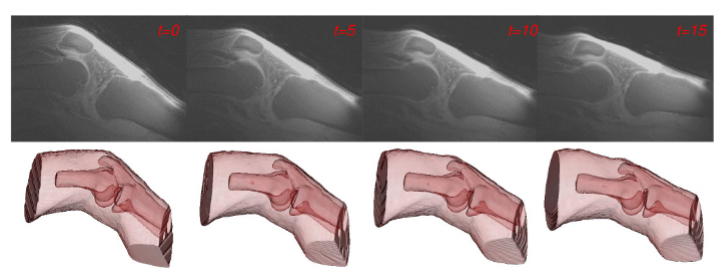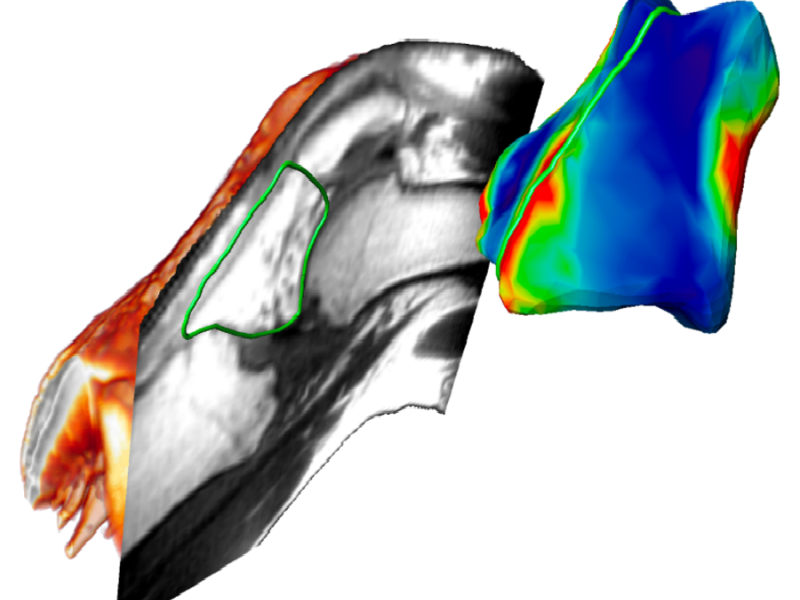Introduction
The aim of this project is the development of MRI-based methods and technologies for non-invasive in vivo assessment of s 3D soft tissue kinematics in knee joints, together with their incident loads. This would pave the way for a better understanding of deformations of tendons, ligaments and menisci in healthy subjects as well as their changes due to pathologies (e.g., after ruptures of the anterior cruciate ligament in young vs. elderly patients).
Project Goals
Given the short acquisition times available in the dynamic imaging setup, only partial information (low-resolution images) can be acquired. Therefore, specialized 3D reconstruction methods have to be developed in order to extract the motion of soft tissues from partial data by correlating the information from high-resolution static images with low-resolution dynamic sequences.

Fig. 1. Selected time frames of the dynamic MRI sequence show large changes of image intensity across the time frames.
Static and dynamic MRI data
Ultra-short echo-time (UTE) MRI sequences have been developed at Jena University Hospital, which were made specifically for dynamic imaging of human knee joints. Based on these sequences and a custom-made device for guided knee motion, developed at Charitè, a combination of high-resolution static and low-resolution dynamic MRI data was acquired.

Fig. 2. Acquired MRI knee data and its reconstruction. The reconstructed image is overlaid with a grid which represents how the HR reference image was deformed to align with corresponding LR dynamic time frame.
Log-euclidean registration of dynamic MRI
As an alternative to conventional B-spline-based registration, a log-euclidean polyaffine registration framework is investigated. In this framework, each bone is firstly individually registered between adjacent time frames in a rigid manner. Then, the resulting transformations are combined using the exponential weighting function and the log-euclidean mapping to obtain the final reconstructed image together with the approximated deformation field.

Fig. 3. Comparison between our B-spline-based registration approach and the log-euclidean poly-affine framework for a single time frame. Slices on the left show the normalized image difference between the HR reconstruction and the HR ground truth, while images on the right show the relative volume change for a 2D slice of Hoffa’s fat pad.
High spatial resolution dynamic MRI
A high resolution (spatial and temporal) dynamic image sequence can be reconstructed using one of the aforementioned image registration approaches. This enables us to investigate soft tissues deformations during dynamic knee movement.

Fig. 4. Reconstructed dynamic HR image (top) and dynamic displacement of bones and soft tissues (bottom).
